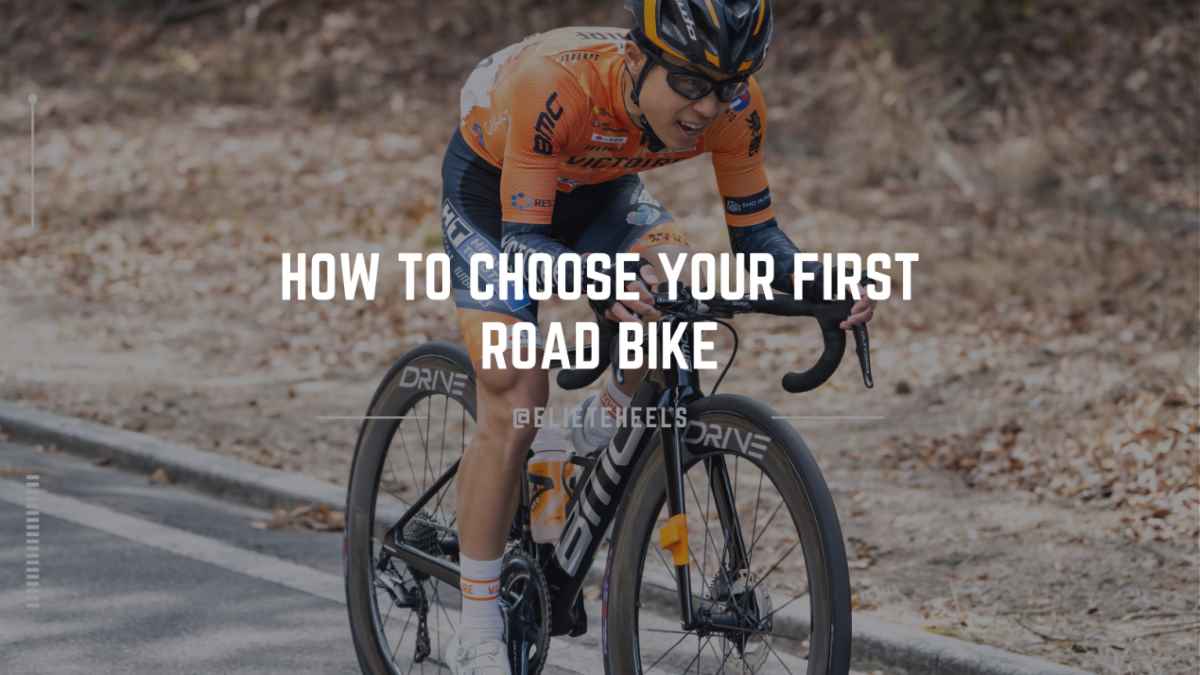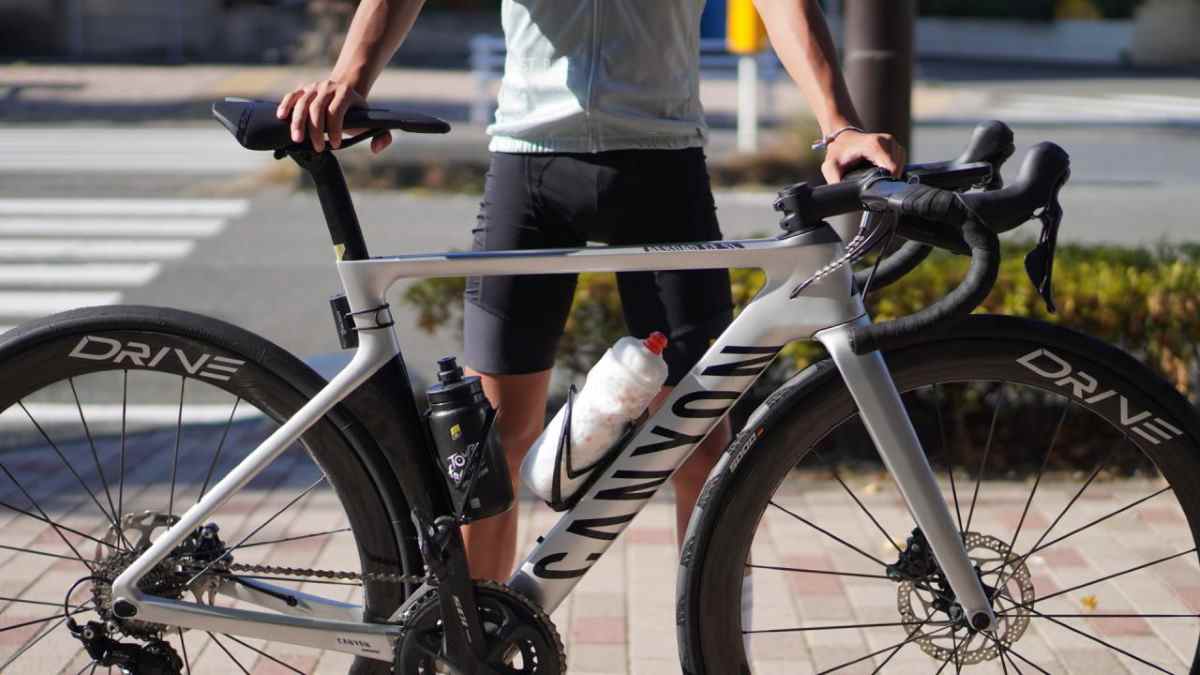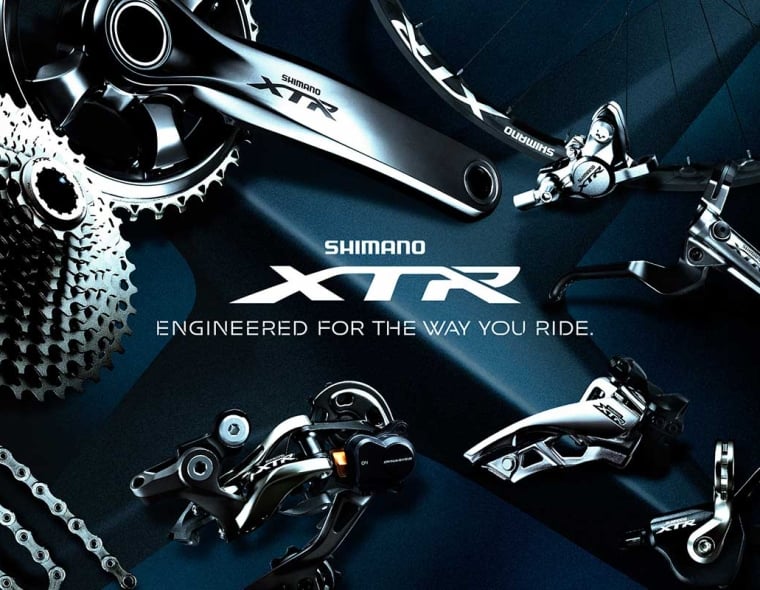
How do you choose a road bike when there are so many options available?
For beginners, selecting your first road bike can be daunting due to the extensive variety of materials and components. In this article, we explore various aspects, such as frame geometry, groupset components, wheels, and riding styles to help you find a road bike that aligns with your wants and needs.

Understand Key Bike Components
Frame Geometry
The design of the bike frame affects your comfort and the bike’s handling. Most road bikes feature sporty geometry, ideal for speed but possibly uncomfortable over long rides. Beginners may opt for a more upright geometry for a balance of comfort and speed.

(Source: Understanding Bicycle Frame Geometry – CYCLINGABOUT)
- Top Tube Length: This is the horizontal distance between the head tube and the seat tube. It affects the reach of the rider to the handlebars, impacting comfort and control during riding. A longer top tube generally means a more stretched-out riding position, which can be good for racing but may be uncomfortable for longer, leisurely rides.
- Head Tube Angle: The angle of the head tube influences how the bike handles. A steeper angle results in quicker steering, which is good for agile, responsive riding in races. A more angled head tube provides more stable handling, making it better for beginners or for riding on rough roads.
- Seat Tube Angle:This is the angle of the seat tube relative to the ground. It affects the rider’s posture and how effectively they can pedal. A steeper seat tube angle positions the rider more over the pedals, which can enhance pedaling efficiency and power on flat terrains.
- Chainstay Length: The length of the chainstays affects the bike’s stability and acceleration. Longer chainstays provide more stability and comfort, while shorter chainstays make the bike more maneuverable and quicker to accelerate.
- Wheelbase: The distance between the front and rear axles. A longer wheelbase results in a smoother ride and more stability, especially at high speeds or on rough surfaces. A shorter wheelbase makes the bike more nimble and responsive.
- Bottom Bracket Height: The height of the bottom bracket from the ground impacts the bike’s center of gravity. A lower bottom bracket height results in better stability as it lowers the center of gravity, but it also increases the risk of pedal strikes on uneven surfaces.
- Fork Rake: This is the distance the fork extends forward of the steering axis. More rake increases the wheelbase and can help smooth out the ride by increasing the fork’s ability to absorb shock directly from the front.
Groupset Quality
This includes all braking and gearing components like derailleurs and brakes. Brands like Shimano, SRAM, or Campagnolo offer ranges from beginner to professional groupsets. For starters, a Shimano’s Claris or Sora groupset might be ideal for their reliability without breaking the bank. Here’s what a groupset includes and why its quality matters:

(Source: Your complete guide to Shimano road bike groupsets 2024 — Everything you need to know | road.cc)
- Derailleurs:The front and rear derailleurs move the chain between different gears on the crankset and cassette, high-quality derailleurs offer more precise and reliable shifting.
- Shifters: These controls, located on the handlebars, manage the derailleurs’ actions. Good shifters provide smooth and quick gear changes with minimal effort.
- Crankset:This component is connected to the pedals and includes the bike’s chainrings. The design and material of the crankset influence the bike’s power transfer efficiency.
- Cassette: Located on the rear wheel, the cassette comprises a range of gears. A high-quality cassette offers a wider range of gears to help tackle different terrains, from steep hills to fast flats.
- Chain: A crucial part of the groupset, the chain transfers power from the crankset to the cassette. A durable and well-made chain can reduce the risk of snapping and ensure smoother transitions between gears.
- Brakes: Whether disc brakes or rim brakes, the quality of these components is vital for safe and effective stopping power. Higher-end brakes provide more control and reliability in various weather conditions.
- Bottom Bracket: This part houses the bearings on which the crankset spins. A high-quality bottom bracket reduces friction and increases the efficiency of your pedal strokes.
Wheels
The bike’s wheels impact how a bike accelerates, climbs, and handles various road conditions. For beginners, choosing a robust and durable wheelset is crucial as it will better withstand a variety of riding conditions and will require less maintenance.

Alloy vs. Carbon
Aluminum, also known as alloy, wheels are often recommended for new cyclists due to their longevity, comfort, and value. Alloy wheels are often included on new budget and even mid-range road bikes.
Another good option for beginners is budget carbon wheels, which can be lighter, more responsive, and more aerodynamic their than aluminum counterparts. Carbon wheels come in a range of different wheels depths, allowing for greater customization as well.
Budget Carbon Wheels
Elitewheels’ Marvel series is considered a high-performance, entry-level carbon wheelset, offering premium quality at an affordable price point. They come in four different rim depths, including 38mm, 50mm, 60mm, and 82mm. They feature Pillar spokes and can be upgraded to Sapim CX Rays. Their hubs feature low rolling resistance ceramic bearings, an upgrade from standard steel ones. The Marvel 38D weighs in at 1614 grams for the pair, making it 500-200 grams lighter than most stock alloy wheelsets.
Upgraded Carbon Wheels
As you progress in your cycling journey, upgrading to better wheels can improve your riding efficiency. Elitewheels’ Drive series is an upgrade from the Marvel series. These wheelsets feature carbon spokes, our more advanced UNI carbon fiber, and high-precision ceramic bearing hubs. They are tubeless-ready, have a 21mm internal rim width, and weigh only 1260g for a pair of 40mm disc brake wheels. Drive wheels can provide you with a pro-level cycling experience for a fraction of the price.
Tires
It’s also important to consider wheel size and tire compatibility. Standard road bikes usually come equipped with 700c wheels and are fitted with 25mm or 28mm tires for optimal rolling resistance and speed. Road tires are run at high pressures, from 80-120 psi, depending on the width. The quality of the tires fitted on the wheels matters, as good tires can improve grip, speed, and comfort.
Match the Bike with Your Riding Style and Budget
Identify Your Riding Style: Whether it’s leisurely rides, daily commutes, or competitive racing, each style demands specific bike features. For example, leisure riders might prefer comfort, commuters durability, and racers might focus on bike stiffness and weight.
Set Your Budget: Road bikes vary widely in price. Set a realistic budget considering not only the initial purchase but also potential costs for maintenance and upgrades. Investing in a high-quality bike might be costlier initially but can offer better longevity and resale value.
Consider Key Accessories: If you’re new to cycling. Helmets, locks, lights, and proper attire are also important. Moreover, it’s wise to reserve a portion of your budget for unexpected repairs or necessary upgrades, like a more comfortable saddle or improved tires, which can dramatically enhance your riding experience.

Prioritize Proper Bike Fit
- Bike Fit: A professional bike fit ensures that various bike parts are adjusted to match your body, enhancing comfort and efficiency, and reducing injury risk.Factors such as the saddle height, handlebar position, and pedal alignment are tailored to your body, ensuring that you can ride longer and harder without discomfort.

Try Before You Buy
Before making a purchase, test different bikes to see which best suits you. Consult experienced riders or bike shop staff to make an informed decision.
Choosing your first road bike is a journey that blends personal preference with technical considerations. With the right approach, you can find a bike that not only fits your budget but also inspires and grows with you as a cyclist.




